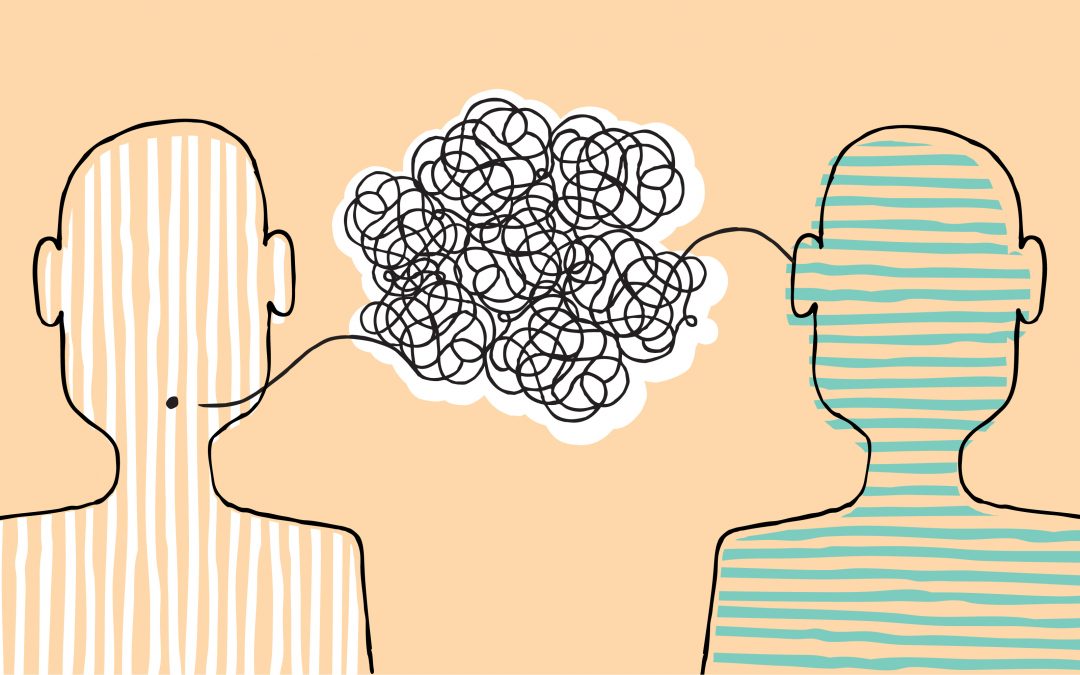Yes, that’s right. Relactional. Learning to listen well is an important part of communication, and good leaders, relactional leaders, need to know how to listen well.
What does being a relactional leader have to do with listening? This kind of leader not only values the relationships in their organizations and teams and the vital transactions necessary for their organizations and teams to function well, but they are also good listeners.
Elements of Good Listening
What does good listening look like? We call it the S.L.O.W.E.R. listening model. This phrase means broadly to slow down and listen. Let’s break down this acronym.
The S
The S means to square up and be silent. To be a good listener, you should square up to the person you’re talking to, face him or her, be silent, and listen to what the person has to say. We have to show the person we are really focused on them and on what they’re saying. They need to see through our body language that we are listening to what they’re saying. Facing them squarely shows them we are ready to listen.Silence is one of the hardest tools for a leader to use, especially for one who likes to process out loud as I do. When listening, though, we have to be silent even if it means allowing the room to get uncomfortable. That silence allows those who process internally to have the time to process before going on to the next subject. You might be amazed by some of the great ideas that the internal processors will come up with if given the time to process while you go silent.
The L
The I means to lean into the conversation. Lean in and listen. Show interest. Look interested through your body language. A caution though: As you’re leaning into conversations with people, be aware of the person’s personal space. Most people get uncomfortable when someone is standing too close to them while they are talking. If you are like me and don’t really have a “personal space,” be very careful not to step into someone else’s. You can know their comfort level by reading the person’s body language and facial expressions. If they back away a little bit, you know that you have stepped into their personal space. If you have, gently and simply back out of it.
The O
Also, when you’re talking to someone, ask open-ended questions. That gives the person an opportunity to do more talking. Don’t just ask yes or no questions. Those kinds of questions invite a person to be brief. Instead, open up the conversation for the person to talk in greater detail so you can listen. Be especially mindful of that with children. Consider asking them open-ended questions instead of simply, “What did you do today?” Most often, the response will be, “Nothing.”
The W
The W stands for being willing to be engaged. To show that you are really listening, you will need to turn around from your computer, put down your cell phone, and stop other physical activities so you can show you are really listening. Demonstrate your willingness to be engaged in the whole conversation and with your whole body.
The E
The E means to make eye contact. Look at the person who’s talking to you. That shows respect. Listen with your ears as well as your eyes. Yes, it’s true that eye contact is not appropriate in some cultures, so please apply this principle judiciously if you are in one of those cultures.
The R
The R equals relax, respond, and repeat. When you’re listening, relax, respond, and maybe even repeat back (if necessary) what you think you heard or what the person said to ensure that full communication is taking place.
The Benefits of S.L.O.W.E.R. to a Relactional Leader
If you’ll learn to apply this S.L.O.W.E.R. listening model to your conversations, the people you’re with – whether at home, in your workplace, or whatever other sphere you’re in – will feel more confident that you care about them because you’ll be more engaged with what they are saying. Remember that 55% of communication is through our body language. This not only applies to talking, but also to listening.
In addition, since a relactional leader also cares about transactions and getting the job done in a timely manner and doing it well, by including these listening skills in your communication, you’ll get a lot more done and a lot more done quickly because people will feel heard.
To become a transformational, relactional leader with a greater impact, apply this S.L.O.W.E.R. listening model to improve your communication as well as your relationships and the transactions connected to those relationships.
Ford Taylor is a leadership strategist, keynote speaker, and the author of Relactional Leadership. As the Founder of Transformational Leadership, he is known as a man who can solve complex business issues, with straightforward practical solutions, while maintaining his focus on people.



